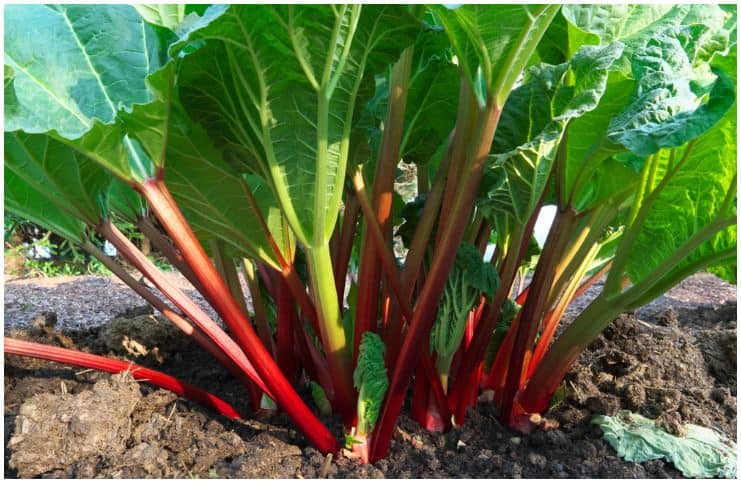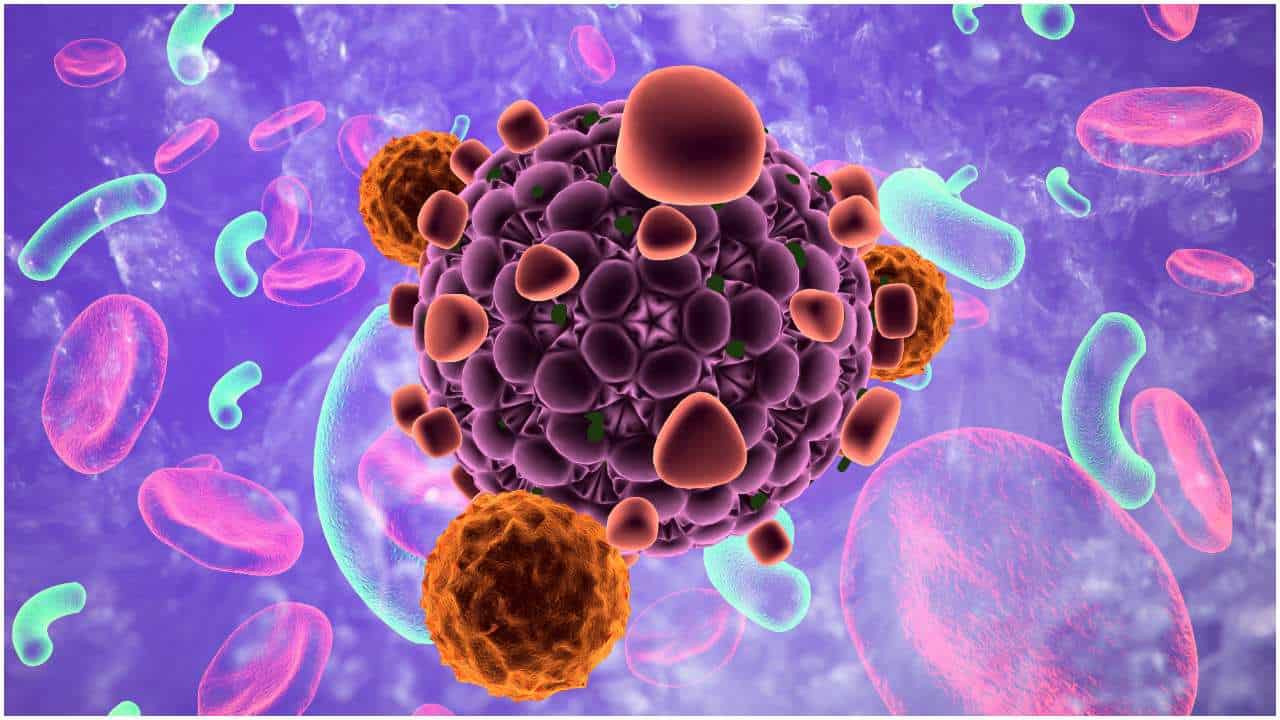Rhubarb – Side Effects & Health Benefits:
Rhubarb (scientific name – Rheum rhabarbarum) is technically a vegetable but is legally considered a fruit from the Polygonaceae family. It has a tart taste with a lemony flavor due to its malic acid content.
The plant dates back to more than 5000 years ago when it was grown and used for medicinal purposes in China. From there, it spread to America in the 1700s, landing in Maine and then reaching Massachusetts.
In the present day, it is cultivated throughout the year in different parts of the world, so it is available in almost any season.
Note
The flowers and stalks are the only edible parts of the plant. This is crucial to know since the leaves are poisonous.
Nutrition Facts
This plant is a good source of dietary fiber, vitamins, like – A, B1, B2, B3, B5, B6, B9, C, E, K, minerals which include – calcium, copper, iron, potassium, phosphorus, selenium, zinc, manganese, and magnesium.
In terms of organic substances, it is a good source of polyphenolic flavonoids like – zeaxanthin and lutein.
The color results from the presence of anthocyanins.
Health Benefits Of Rhubarb
Relieves Constipation
In traditional Chinese medicine, the roots of Rheum rhabarbarum have been used as a laxative.
The plant contains the phytochemicals named anthraquinones, including emodin and rhein, which have powerful laxative properties.
Weight Loss
Presently, many individuals attempt to lose weight, become disheartened and frustrated, and turn to pills, supplements, meal replacements, unhealthy fad diets, and surgery.
This plant contains 21 kcal/100g, which makes it perfect for weight loss.
Bone Health
Vitamin K is a fat-soluble vitamin that your body stores in the liver and fat tissue.
It is one of the main vitamins involved in brain function and metabolism, it prevents excessive bleeding and type 2 diabetes, and maintains blood clotting and bone mineralization.
It also plays an important role in the protection against cancer. Low levels of vitamin K have been found in individuals with osteoporosis (a disease in which the bones become weak and are more likely to break), while higher levels of vitamin K helps in maintaining a greater bone density (1).
100g of this plant contains 24% vitamin K of the recommended daily intake.
Wound Healing
Manganese is an important mineral that is present in small amounts in the body. It is found mostly in the liver, bones, pancreas, and kidneys.
Wound healing is a complex process that requires increased production of collagen, the most plentiful protein in the body.
Manganese is required for the activation of prolidase, an enzyme that functions to provide the amino acid proline for collagen formation in human skin cells (2). 100g of this plant contains 9% manganese of the recommended daily intake.
Keeps The Skin Healthy
Vitamin C is a powerful antioxidant with increasingly diverse uses in disease prevention and health promotion. This antioxidant limits the damage induced by ultraviolet light exposure.
Once sun rays enter the skin, vitamin C slows the rate of free-radical damage to collagen and aids in skin repair by factors associated with reduced oxidation damage to the skin cells’ DNA (3).
100g of this fruit contains 9% vitamin C of the recommended daily intake.
Lowers Blood Pressure
Potassium is an important dietary electrolyte and mineral. Too much sodium, usually in Western diets that use a lot of salt, may increase the need for potassium.
Many studies have proved a link between low potassium intake and a higher risk of stroke and increased blood pressure.
This mineral relaxes the walls of the blood vessels, which leads to lower blood pressure and protection against muscle cramping. 100g of this plant contains 6% potassium of the recommended daily intake.
Cancer Prevention
This plant is a storehouse of antioxidants like lutein, beta-carotene, and zeaxanthin, which neutralize free radicals throughout the body.
The damage to cells caused by free radicals, particularly the damage to DNA, may play an important role in the development of cancer and other chronic diseases (4).
Anti-Inflammatory Properties
It has potent anti-inflammatory effects, and it has been used in traditional Chinese medicine as a treatment for inflammatory diseases like rheumatoid arthritis and appendicitis (5).
Lower LDL Cholesterol Levels
There are two types of it: insoluble and soluble, although most fiber-rich foods contain some of both. Dietary fiber is found exclusively in plant foods.
Studies have shown that increasing the intake of fiber by 5 to 10 g per day reduces bad cholesterol by about 5% by binding with LDL cholesterol particles in your digestive system and moving them out of the body before they’re absorbed.
100g of this plant contains 5% fiber of the recommended daily intake.
Leukemia
A pigment found in this plant called parietin has been known to have killed half the human leukemia cells over 2 days in the laboratory.
Additionally, parietin slowed the growth of other human cancer cells in animal studies.
Helps With Digestive Problems
In 2011, scientists at Tisco General Hospital, Taiyuan, China, established that this plant can help protect the intestinal wall (which is made up of 4 layers of specialized tissue) through the increased secretion of gastrointestinal hormones (such as cholecystokinin, secretin, or substance P) while providing normal contraction of the muscles that mix the contents of the gastrointestinal tract (6).
Side Effects Of Rhubarb
The leaves of the plant contain high amounts of oxalic acid (especially if the plant is damaged by severe cold), a toxic and potentially deadly poison. However, to really activate this poison, you need to consume large amounts of the leaves.
People who are susceptible to forming calcium oxalate kidney stones should consult with their healthcare specialist to avoid foods that are high in oxalates.
In addition, this plant can interact with different medications, like – Digoxin, a drug used for heart failure. Also, it should not be consumed at the same time as other drugs for constipation.
Pregnant or breastfeeding women and small children should not ingest this root due to the content of anthraquinones.
Selection and Storing
Select a plant that is firm, fresh, crispy bright-red color stalks. It is also available in frozen form, but choose one that does not contain added refined sugar.
You can store it in the fridge and consume it within 2-3 days. Furthermore, you should keep the leaves on until you’re ready to eat it, as they’ll help keep it fresh.
How To Eat
The leaves contain oxalic acid, so they should not be eaten. So, cut the leaves and discard them. The health benefits improve when cooked in the oven for 20 minutes rather than eating it raw.
Due to its tart taste, it is mostly used in pies, crumbles, tarts, jam, and sauces or with other sweet fruits. It can also be consumed in the form of juice.






